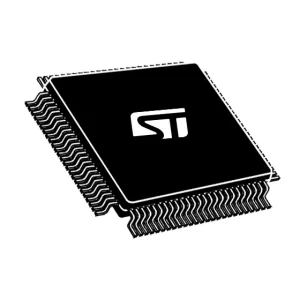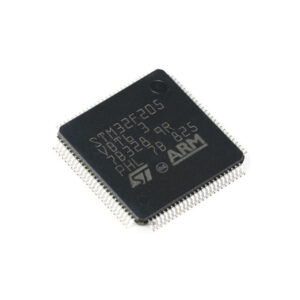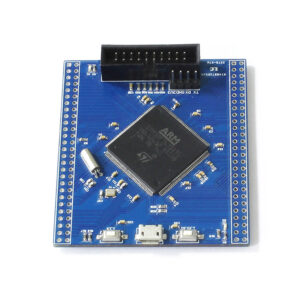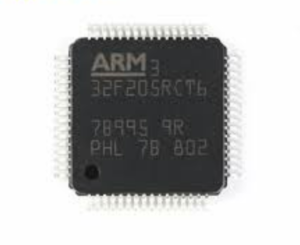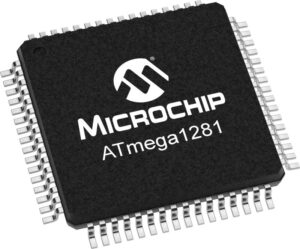 Break STM32F205VCT6 MCU Chip Flash Memory
Break STM32F205VCT6 MCU Chip Flash Memory
Break STM32F205VCT6 MCU Chip Flash Memory needs to crack stm32f205vct6 arm mcu protective system, copy embedded flash program to new microcontroller stm32f205vct6;
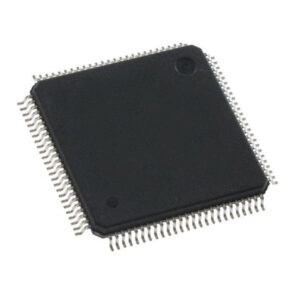
Break STM32F205VCT6 MCU Chip Flash Memory needs to crack stm32f205vct6 arm mcu protective system, copy embedded flash program to new microcontroller stm32f205vct6
The two DMA controllers support circular buffer management, so that no specific code is needed when the controller reaches the end of the buffer. The two DMA controllers also have a double buffering feature, which automates the use and switching of two memory buffers without requiring any special code when breaking stm32f205rbt6 mcu flash memory protection.
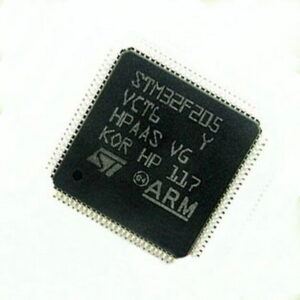
romper STM32F205VCT6 La memoria flash del chip MCU necesita descifrar stm32f205vct6 armar el sistema de protección mcu, copiar el programa flash integrado al nuevo microcontrolador stm32f205vct6
Each stream is connected to dedicated hardware DMA requests, with support for software trigger on each stream. Configuration is made by software and transfer sizes between source and destination are independent.
The FSMC is embedded in all STM32F20x devices. It has four Chip Select outputs supporting the following modes: PC Card/Compact Flash, SRAM, PSRAM, NOR Flash and NAND Flash.
Functionality overview:
- Write FIFO
- Code execution from external memory except for NAND Flash and PC Card
- Maximum frequency (fHCLK) for external access is 60 MHz
LCD parallel interface
The FSMC can be configured to interface seamlessly with most graphic LCD controllers. It supports the Intel 8080 and Motorola 6800 modes, and is flexible enough to adapt to specific LCD interfaces by recover stm32f205rct6 mcu flash memory program. This LCD parallel interface capability makes it easy to build cost- effective graphic applications using LCD modules with embedded controllers or high performance solutions using external controllers with dedicated acceleration.
 Attack STMicroelectronics STM32F205VB MCU Protection
Attack STMicroelectronics STM32F205VB MCU Protection
Attack STMicroelectronics STM32F205VB MCU Protection and unlock stm32f205vbt6 secured microcontroller flash program file after copy flash heximal file to stm32f205vb arm chip;
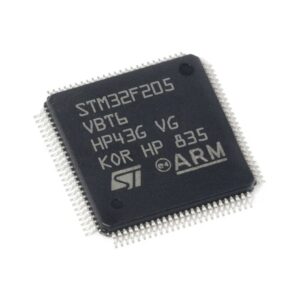
Attack STMicroelectronics STM32F205VB MCU Protection and unlock stm32f205vbt6 secured microcontroller flash program file after copy flash heximal file to stm32f205vb arm chip
The CRC (cyclic redundancy check) calculation unit is used to get a CRC code from a 32-bit data word and a fixed generator polynomial.
Among other applications, CRC-based techniques are used to verify data transmission or storage integrity. In the scope of the EN/IEC 60335-1 standard by breaking arm mcu chip stm32f205rb flash memory, they offer a means of verifying the Flash memory integrity. The CRC calculation unit helps compute a software signature during runtime, to be compared with a reference signature generated at link-time and stored at a given memory location.
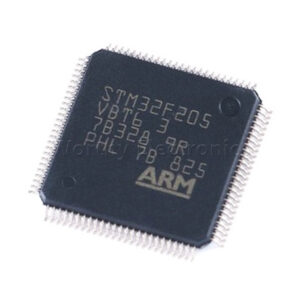
ataque STMicroelectronics STM32F205VB MCU protección y desbloqueo stm32f205vbt6 archivo de programa flash del microcontrolador seguro después de copiar el archivo flash heximal al chip arm stm32f205vb
All STM32F20x products embed:
- Up to 128 Kbytes of system SRAM accessed (read/write) at CPU clock speed with 0 wait states
- 4 Kbytes of backup
The content of this area is protected against possible unwanted write accesses, and is retained in Standby or VBAT mode.
The 32-bit multi-AHB bus matrix interconnects all the masters (CPU, DMAs, Ethernet, USB HS) and the slaves (Flash memory, RAM, FSMC, AHB and APB peripherals) and ensures a seamless and efficient operation even when several high-speed peripherals work simultaneously.
The devices feature two general-purpose dual-port DMAs (DMA1 and DMA2) with 8 streams each. They are able to manage memory-to-memory, peripheral-to-memory and memory-to-peripheral transfers. They share some centralized FIFOs for APB/AHB peripherals, support burst transfer and are designed to provide the maximum peripheral bandwidth (AHB/APB).
 ARM Microcontroller STM32F205RG Flash Code Recovery
ARM Microcontroller STM32F205RG Flash Code Recovery
ARM Microcontroller STM32F205RG Flash Code Recovery starts from crack mcu chip stm32f205rg protective system and then decode secured flash memory software from microprocessor stm32f205rg;
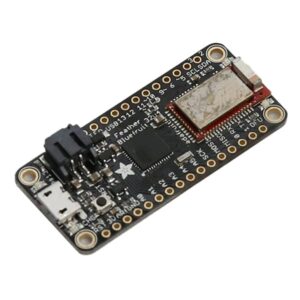
ARM Microcontroller STM32F205RG Flash Code Recovery starts from crack mcu chip stm32f205rg protective system and then decode secured flash memory software from microprocessor stm32f205rg;
The memory protection unit (MPU) is used to manage the CPU accesses to memory to prevent one task to accidentally corrupt the memory or resources used by any other active task. This memory area is organized into up to 8 protected areas that can in turn be divided up into 8 subareas. The protection area sizes are between 32 bytes and the whole 4 gigabytes of addressable memory.
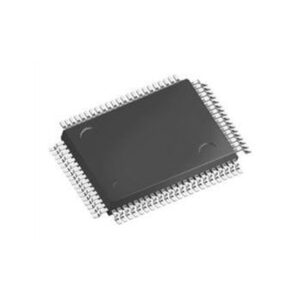
La recuperación del código flash del microcontrolador ARM STM32F205RG comienza desde el sistema de protección crack mcu chip stm32f205rg y luego decodifica el software de memoria flash seguro del microprocesador stm32f205rg
The MPU is especially helpful for applications where some critical or certified code has to be protected against the misbehavior of other tasks. It is usually managed by an RTOS (real- time operating system). If a program accesses a memory location that is prohibited by the MPU, the RTOS can detect it and take action. In an RTOS environment, the kernel can dynamically update the MPU area setting, based on the process to be executed.
The MPU is optional and can be bypassed for applications that do not need it. The STM32F20x devices embed a 128-bit wide Flash memory of 128 Kbytes, 256 Kbytes, 512 Kbytes, 768 Kbytes or 1 Mbyte available for storing programs and data. The devices also feature 512 bytes of OTP memory that can be used to store critical user data such as Ethernet MAC addresses or cryptographic keys.
 Attack ARM STM32F205RF Microprocessor Tamper Resistance
Attack ARM STM32F205RF Microprocessor Tamper Resistance
Attack ARM STM32F205RF Microprocessor Tamper Resistance and decode stm32f205rf secured memory software from its flash, then read out microcontroller stm32f205rf flash memory content;
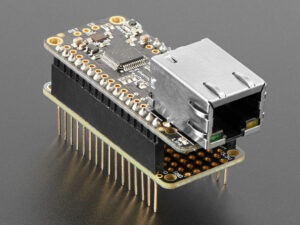
Attack ARM STM32F205RF Microprocessor Tamper Resistance and decode stm32f205rf secured memory software from its flash, then read out microcontroller stm32f205rf flash memory content;
The Arm® Cortex®-M3 processor is the latest generation of processors for embedded systems. It was developed to provide a low-cost platform that meets the needs of MCU implementation, with a reduced pin count and low-power consumption by recovering stm32f205rc microcontroller flash heximal, while delivering outstanding computational performance and an advanced response to interrupts.
The Arm® Cortex®-M3 32-bit RISC processor features exceptional code-efficiency, delivering the high-performance expected from an Arm core in the memory size usually associated with 8- and 16-bit devices. With its embedded Arm® core, the STM32F20x family is compatible with all Arm® tools and software.
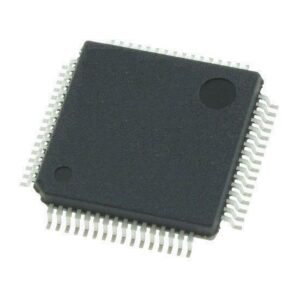
Ataque la resistencia a la manipulación del microprocesador ARM STM32F205RF y decodifique el software de memoria protegida stm32f205rf desde su flash, luego lea el contenido de la memoria flash del microcontrolador stm32f205rf
The ART Accelerator™ is a memory accelerator which is optimized for STM32 industry- standard Arm® Cortex®-M3 processors. It balances the inherent performance advantage of the Arm® Cortex®-M3 over Flash memory technologies to break off stm32f205rb mcu flash memory, which normally requires the processor to wait for the Flash memory at higher operating frequencies.
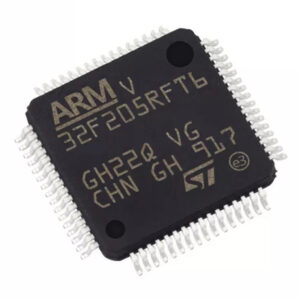
unlock protected STM32F205RFT6 microprocessor fuse bit and readout embedded firmware from mcu chip STM32F205RFT6 flash memory
To release the processor full 150 DMIPS performance at this frequency, the accelerator implements an instruction prefetch queue and branch cache which increases program execution speed from the 128-bit Flash memory. Based on CoreMark® benchmark, the performance achieved thanks to the ART accelerator is equivalent to 0 wait state program execution from Flash memory at a CPU frequency up to 120 MHz.
 Restoring ARM STM32F205RE MCU Flash Firmware
Restoring ARM STM32F205RE MCU Flash Firmware
Restoring ARM STM32F205RE MCU Flash Firmware starts from decrypt ARM STM32F205RE microcontroller flash memory program and then readout embedded code from microprocessor stm32f205re flash memory;
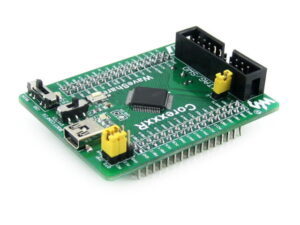
Restoring ARM STM32F205RE MCU Flash Firmware starts from decrypt ARM STM32F205RE microcontroller flash memory program and then readout embedded code from microprocessor stm32f205re flash memory
For the LQFP100 package, only FSMC Bank1 or Bank2 are Bank1 can only support a multiplexed NOR/PSRAM memory using the NE1 Chip Select. Bank2 can only support a 16- or 8-bit NAND Flash memory using the NCE2 Chip Select. The interrupt line cannot be used since Port G is not available in this package.
The SPI2 and SPI3 interfaces give the flexibility to work in an exclusive way in either the SPI mode or the I2S audio on devices in WLCSP64+2 package for arm stm32f205rc mcu flash memory heximal recovery, if IRROFF is set to VDD, the supply voltage can drop to 7 V when the device operates in the 0 to 70 °C temperature range using an external power supply supervisor.
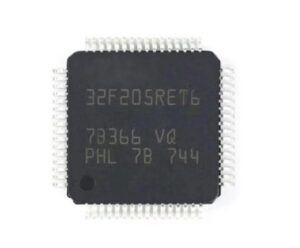
взломать защищенный mcu stm32f205ret6 и скопировать программу flash heximal memory из прошивки микропроцессора stm32f205ret6
The STM32F205xx constitute the STM32F20x family, whose members are fully pin-to-pin, software and feature compatible, allowing the user to try different memory densities and peripherals for a greater degree of freedom during the development cycle.
The STM32F205xx and STM32F207xx devices maintain a close compatibility with the whole STM32F10xxx family. All functional pins are pin-to-pin compatible. The STM32F205xx and STM32F207xx, however, are not drop-in replacements for the STM32F10xxx devices: the two families do not have the same power scheme, and so their power pins are different. Nonetheless, transition from the STM32F10xxx to the STM32F20x family remains simple as only a few pins are impacted.
 ARM STM32F205RC Microcontroller Flash Memory Heximal Recovery
ARM STM32F205RC Microcontroller Flash Memory Heximal Recovery
ARM STM32F205RC Microcontroller Flash Memory Heximal Recovery starts from decrypting arm mcu stm32f205rc embedded memory program and then clone flash memory code to new mcu stm32f205rc;
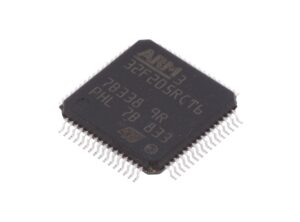
ARM STM32F205RC Microcontroller Flash Memory Heximal Recovery starts from decrypting arm mcu stm32f205rc embedded memory program and then clone flash memory code to new mcu stm32f205rc;
The STM32F205xx and STM32F207xx devices operate in the –40 to +105 °C temperature range from a 1.8 V to 3.6 V power supply. On devices in WLCSP64+2 package, if IRROFF is set to VDD, the supply voltage can drop to 1.7 V when the device operates in the 0 to
70 °C temperature range using an external power supply supervisor (see Section 3.16).
A comprehensive set of power-saving modes enables the design of low-power applications.
STM32F205xx and STM32F207xx devices are offered in various packages, ranging from 64 to 176 pins. The set of included peripherals changes with the chosen device when recovering ic chip stm32f107rct6 code.These features make the STM32F205xx and STM32F207xx microcontroller family suitable for a wide range of applications:
- Motor drive and application control
- Medical equipment
- Industrial applications: PLC, inverters, circuit breakers
- Printers, and scanners
- Alarm systems, video intercom, and HVAC
- Home audio appliances
- For the LQFP100 package, only FSMC Bank1 or Bank2 are Bank1 can only support a multiplexed NOR/PSRAM memory using the NE1 Chip Select. Bank2 can only support a 16- or 8-bit NAND Flash memory using the NCE2 Chip Select. The interrupt line cannot be used since Port G is not available in this package.
- The SPI2 and SPI3 interfaces give the flexibility to work in an exclusive way in either the SPI mode or the I2S audio when breaking stm32f101c4 binary file;
- On devices in WLCSP64+2 package, if IRROFF is set to VDD, the supply voltage can drop to 7 V when the device operates in the 0 to 70 °C temperature range using an external power supply supervisor (see Section 3.16).
 Break ARM STM32F205RB MCU Flash Memory
Break ARM STM32F205RB MCU Flash Memory
Break ARM STM32F205RB MCU Flash Memory and read embedded firmware out from STM32F205RB microcontroller, copy arm cortex3 stm32f205rb program binary to new microprocessor;
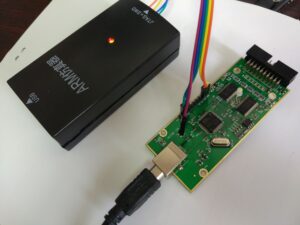
Break ARM STM32F205RB MCU Flash Memory and read embedded firmware out from STM32F205RB microcontroller, copy arm cortex3 stm32f205rb program binary to new microprocessor
The STM32F20x family is based on the high-performance Arm® Cortex®-M3 32-bit RISC core operating at a frequency of up to 120 MHz to recover microcontroller stm32f105rc flash memory content. The family incorporates high-speed embedded memories (Flash memory up to 1 Mbyte, up to 128 Kbytes of system SRAM), up to 4 Kbytes of backup SRAM, and an extensive range of enhanced I/Os and peripherals connected to two APB buses, three AHB buses and a 32-bit multi-AHB bus matrix.
The devices also feature an adaptive real-time memory accelerator (ART Accelerator™) that allows to achieve a performance equivalent to 0 wait state program execution from Flash memory at a CPU frequency up to 120 MHz. This performance has been validated using the CoreMark® benchmark.
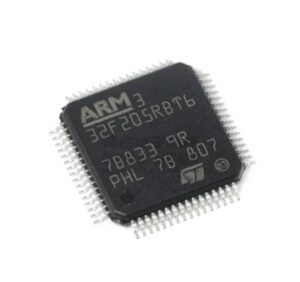
разблокировать защищенный предохранитель микропроцессора stm32f205rbt6 и скопировать шестнадцатеричную программу прошивки из флэш-памяти микрокомпьютера stm32f205rbt6
All devices offer three 12-bit ADCs, two DACs, a low-power RTC, twelve general-purpose 16-bit timers including two PWM timers for motor control, two general-purpose 32-bit timers. a true number random generator (RNG). They also feature standard and advanced communication interfaces when breaking off stm32f101c4 flash memory firmware. New advanced peripherals include an SDIO, an enhanced flexible static memory control (FSMC) interface (for devices offered in packages of 100 pins and more), and a camera interface for CMOS sensors. The devices also feature standard peripherals.
- Up to three I2Cs
- Three SPIs, two I2 To achieve audio class accuracy, the I2S peripherals can be clocked via a dedicated internal audio PLL or via an external PLL to allow synchronization.
- Four USARTs and two UARTs
- A USB OTG high-speed with full-speed capability (with the ULPI)
- A second USB OTG (full-speed)
- Two CANs
- An SDIO interface
- Ethernet and camera interface available on STM32F207xx devices
 Locked Microcontroller ATmega1281 Flash Memory Breaking
Locked Microcontroller ATmega1281 Flash Memory Breaking
Locked Microcontroller ATmega1281 Flash Memory Breaking is a process to unlock microprocessor atmega1281 flash fuse bit and release software program from its memory and then copy firmware heximal to new mcu atmega1281 avr chip;
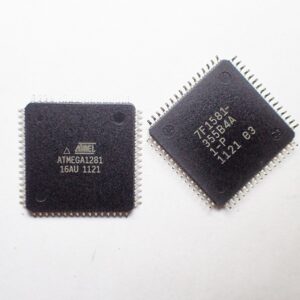
Locked Microcontroller ATmega1281 Flash Memory Breaking is a process to unlock microprocessor atmega1281 flash fuse bit and release software program from its memory and then copy firmware heximal to new mcu atmega1281 avr chip;
This section discusses the AVR core architecture in general. The main function of the CPU core is to ensure cor- rect program execution. The CPU must therefore be able to access memories, perform calculations, control peripherals, and handle interrupts.
In order to maximize performance and parallelism, the AVR uses a Harvard architecture – with separate memories and buses for program and data. Instructions in the program memory are executed with a single level pipelining by reverse engineering microcontroller atmega1281 program. While one instruction is being executed, the next instruction is pre-fetched from the program memory. This concept enables instructions to be executed in every clock cycle. The program memory is In-System Reprogrammable Flash memory.
The fast-access Register File contains 32 × 8-bit general purpose working registers with a single clock cycle access time. This allows single-cycle Arithmetic Logic Unit (ALU) operation. In a typical ALU operation, two operands are output from the Register File, the operation is executed, and the result is stored back in the Register File– in one clock cycle by reverse engineering atmega1281 mcu firmware.
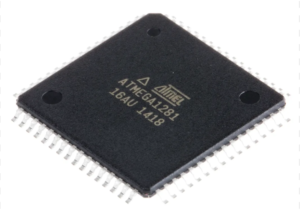
Desbloquee los datos del programa del controlador Microchip ATMEGA1280V y lea la memoria flash mcu atmega1280v heximal, el contenido flash original del microcontrolador avr atmega1280v se decodificará
Six of the 32 registers can be used as three 16-bit indirect address register pointers for Data Space addressing – enabling efficient address calculations. One of the these address pointers can also be used as an address pointer for look up tables in Flash program memory. These added function registers are the 16-bit X-, Y-, and Z-register, described later in this section.
 Unlock Microchip ATMEGA1280V Controller Program Data
Unlock Microchip ATMEGA1280V Controller Program Data
Unlock Microchip ATMEGA1280V Controller Program Data and read mcu atmega1280v flash memory heximal, original avr microcontroller atmega1280v flash content will be decoding;
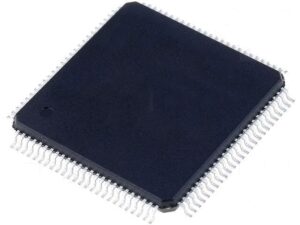
Unlock Microchip ATMEGA1280V Controller Program Data and read mcu atmega1280v flash memory heximal, original avr microcontroller atmega1280v flash content will be decoding
Port G is a 6-bit bi-directional I/O port with internal pull-up resistors (selected for each bit). The Port G output buffers have symmetrical drive characteristics with both high sink and source capability. As inputs, Port G pins that are externally pulled low will source current if the pull-up resistors are activated when breaking ic chip atmega1280v flash binary. The Port G pins are tri-stated when a reset condition becomes active, even if the clock is not running. Port G also serves the functions of various special features of the Atmel ATmega1280v as listed on page 72.
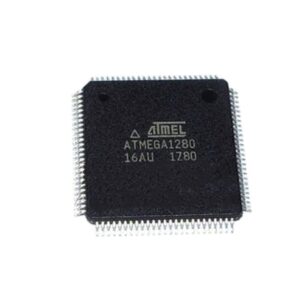
Desbloquee los datos del programa del controlador Microchip ATMEGA1280V y lea la memoria flash mcu atmega1280v heximal, el contenido flash original del microcontrolador avr atmega1280v se decodificará
Port H is a 8-bit bi-directional I/O port with internal pull-up resistors (selected for each bit). The Port H output buffers have symmetrical drive characteristics with both high sink and source capability. As inputs, Port H pins that are externally pulled low will source current if the pull-up resistors are activated. The Port H pins are tri-stated when a reset condition becomes active when recover microprocessor atmega1280v flash memory file, even if the clock is not running. Port H also serves the functions of various special features of the ATmega3250/6450 as listed on page 72.
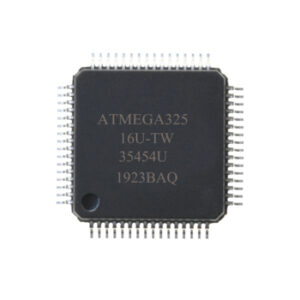
clone atmega1280v microprocessor flash heximal and copy firmware code to new atmega1280v microcontroller and encrypt the chip
Port J is a 7-bit bi-directional I/O port with internal pull-up resistors (selected for each bit). The Port J output buffers have symmetrical drive characteristics with both high sink and source capa- bility. As inputs, Port J pins that are externally pulled low will source current if the pull-up resistors are activated. The Port J pins are tri-stated when a reset condition becomes active, even if the clock is not running.
 Microchip ATmega1280 Locked Microcontroller Heximal Restoration
Microchip ATmega1280 Locked Microcontroller Heximal Restoration
Microchip ATmega1280 Locked Microcontroller Heximal Restoration needs to unlock mcu atmega1280 flash memory and then read out firmware program from atmega1280 flash and eeprom memory;
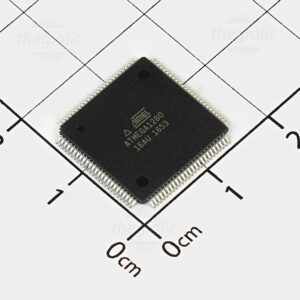
Microchip ATmega1280 Locked Microcontroller Heximal Restoration needs to unlock mcu atmega1280 flash memory and then read out firmware program from atmega1280 flash and eeprom memory
Port H is a 8-bit bi-directional I/O port with internal pull-up resistors (selected for each bit). The Port H output buf- fers have symmetrical drive characteristics with both high sink and source capability. As inputs, Port H pins that are externally pulled low will source current if the pull-up resistors are activated. The Port H pins are tri-stated when a reset condition becomes active, even if the clock is not running.
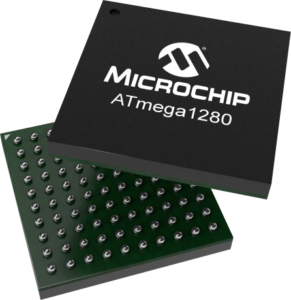
La restauración heximal del microcontrolador bloqueado ATmega1280 de Microchip necesita desbloquear la memoria flash mcu atmega1280 y luego leer el programa de firmware de la memoria flash atmega1280 y eeprom;
Port J is a 8-bit bi-directional I/O port with internal pull-up resistors (selected for each bit). The Port J output buffers have symmetrical drive characteristics with both high sink and source capability. As inputs, Port J pins that are externally pulled low will source current if the pull-up resistors are activated. The Port J pins are tri-stated when a reset condition becomes active, even if the clock is not running.
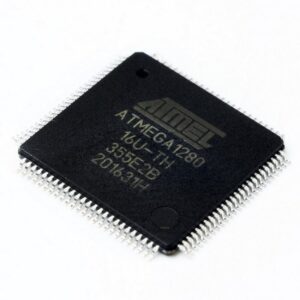
crack atmel atmega1280 mcu fuse bit and readout embedded firmware from microcontroller atmega1280 flash and eeprom memory
Port K is a 8-bit bi-directional I/O port with internal pull-up resistors (selected for each bit). The Port K output buffers have symmetrical drive characteristics with both high sink and source capability. As inputs, Port K pins that are externally pulled low will source current if the pull-up resistors are activated. The Port K pins are tri-stated when a reset condition becomes active, even if the clock is not running.
